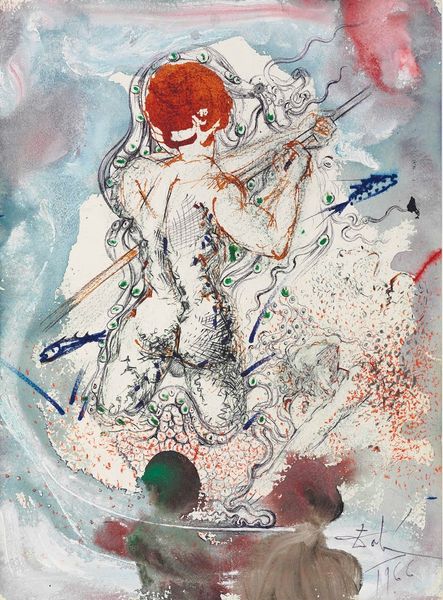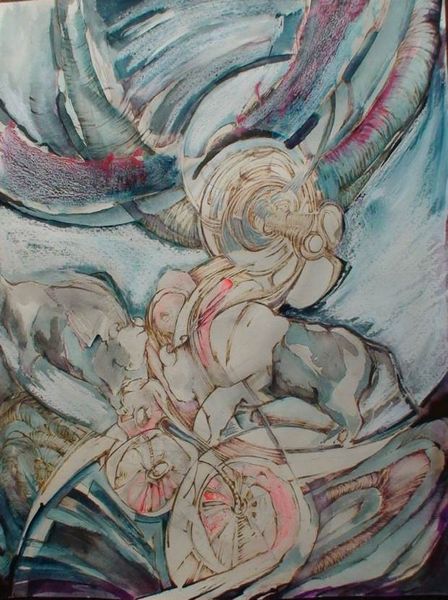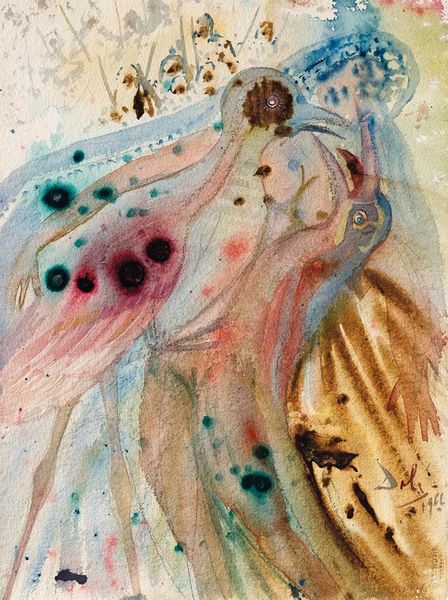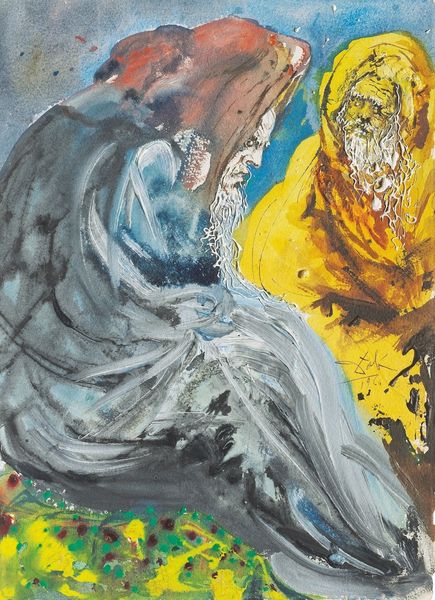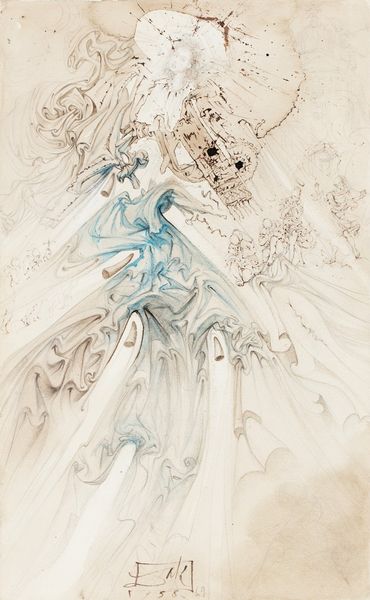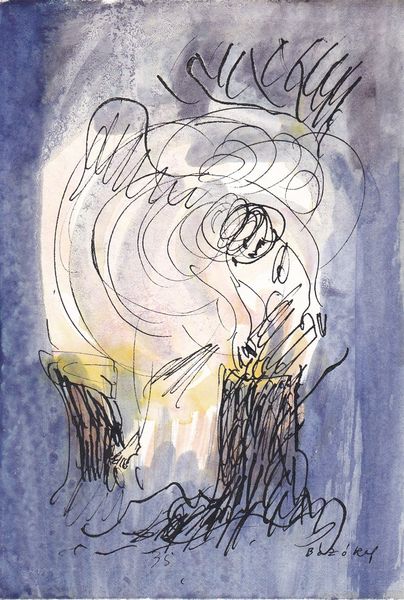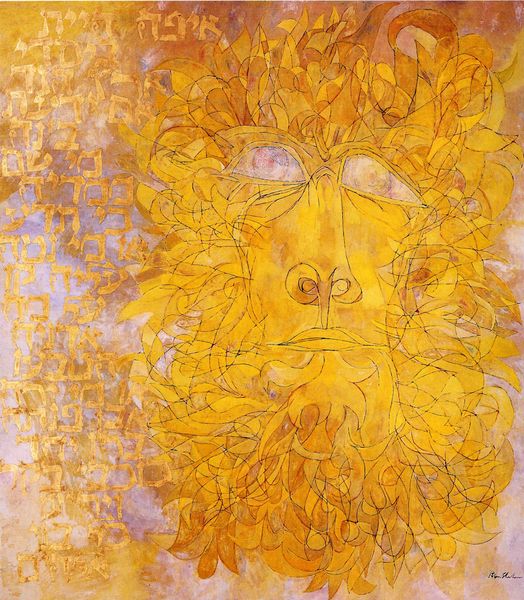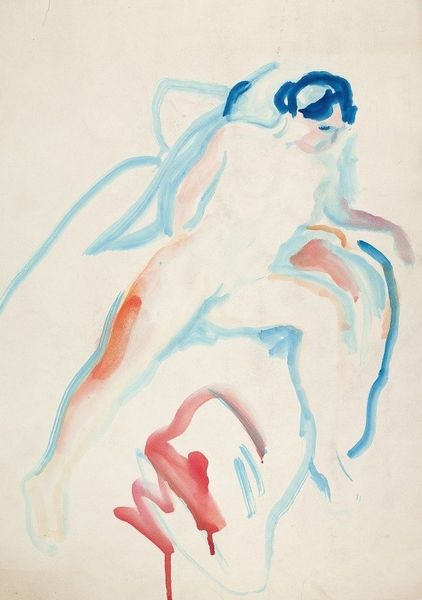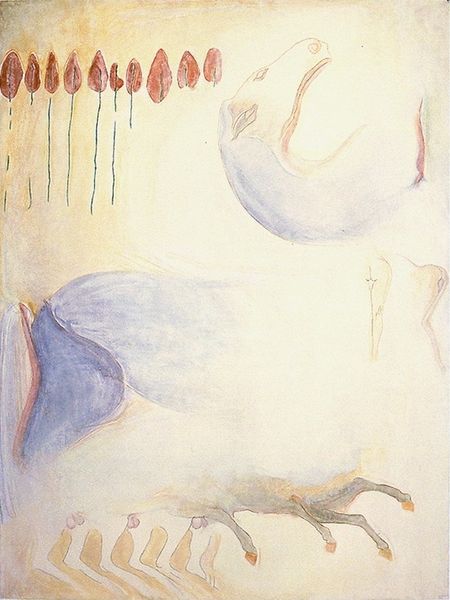
Le corps d’Ophélia morte par noyade recouverte des fleurs jetées par la Reine 1967
0:00
0:00
drawing, watercolor
#
portrait
#
drawing
#
water colours
#
narrative-art
#
landscape
#
figuration
#
watercolor
#
watercolour illustration
#
history-painting
#
surrealism
#
realism
Copyright: Modern Artists: Artvee
Editor: This is Salvador Dali's "Le corps d’Ophélia morte par noyade recouverte des fleurs jetées par la Reine," a watercolor from 1967. The image evokes such a poignant sense of tragic beauty. What cultural narratives and symbols resonate within you as you consider this artwork? Curator: Indeed. The drowned Ophelia, a Pre-Raphaelite icon revisited by Dalí, embodies themes of innocence lost and feminine vulnerability. But beyond that, the watercolor medium itself is suggestive here. Note the dissolving forms, the way the colours bleed. Do you see how that mirrors the dissolving of life in water, a sort of baptism in reverse? Editor: I see the dissolving effect now that you mention it! The splotches of colour – do those function symbolically as well, maybe as a commentary on the Queen's flowers mentioned in the title? Curator: Precisely! Consider how flowers traditionally symbolize remembrance, beauty, and fragility, but here, perhaps even guilt, flung upon the scene like discarded emotions. It also makes me think of how cultural memory around such famous stories shifts with the telling – what we choose to highlight and what fades away, just like the watercolour does on the paper. What emotions do these cultural symbols evoke in you? Editor: Sadness, certainly, but also a sense of peace, and acceptance in the face of an unjust end. I see what you mean about cultural memory; it is our own associations layered on the imagery of loss. Curator: An excellent observation! Perhaps we carry inherited griefs and narratives within us and project them onto this tragic image of feminine fragility, just as the queen throws the flowers upon the drowning maiden.
Comments
No comments
Be the first to comment and join the conversation on the ultimate creative platform.


